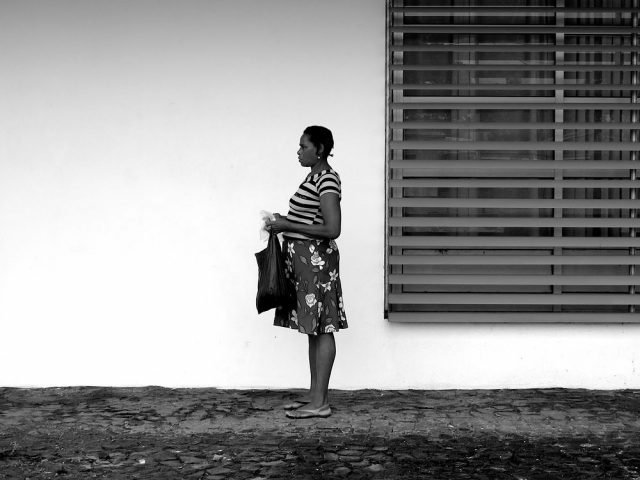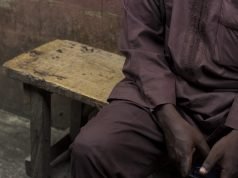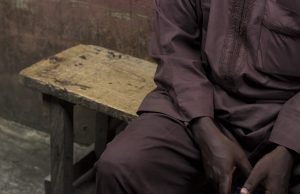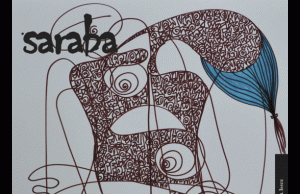In Emeka Okereke’s Photographs, things come full circle, we are bold to establish the terms of his radicalism, and we realize how acculturated he has become to the mannerisms of his sight. Take the fact that he has worked mostly in black and white. When I compare the flavor in his Sao Tome photographs with those taken in Biljmer, and then compare that with his early series Rituals, there is sufficient evidence of the extent to which he has always intended to make light available, as though there is a shadow that comes with light lurking away from view. This frugality of light, which his photographs express, is more than a technical choice, and is not necessarily the result of his obsession with rendering images monochromatic. It is something akin to his way of seeing, his intrepid but complicated relationship with what is manifest, and his untiring attempt to capture the life – and light – in the world he scuttles on. What we see is like being rowed across a river that was only turbulent a moment ago. His photographs articulate the presence of a receding life that is troubled, but defiant in its presence.
I will speak straightaway about his photographs because of the directness they command. Directness could be an essential element of discussing photographs, yet something about Okereke’s photographs demand an immediate engagement. We cannot procrastinate our response to the future; the historic moment is now. I speak in this paragraph especially in connection with Intersections, the collection of photographs he took in the south of Amsterdam. The suburb where he undertook the project is called Biljmer, famous for being home to residents of up to 150 nationalities. Already fraught with socioeconomic difficulty, the suburb becomes the site for moments of immediate articulation, moments that become eternal because they are urgent and fractured and faltering. A migrant community, Biljmer is positioned for tenuousness. The social status of its inhabitants makes for a problematic mix with the area’s high rise buildings. And so, in Emeka Okereke’s photographic rendition, we see this fluxion. People are always in motion in the photographs, burdened by how survival is a game of hustles.
His vision for Intersection is to look at the relationship between the individuals and the space “which have come to embody their trajectory from homeland to this point where they are obliged to intersect with multi-cultures.” How does a photograph embody a trajectory? Photographs are characteristic of the movement of time. They are time machines that make stops as they move back and forth between past and present, continuing and at the same instant discontinuing time. This brings me back to an earlier phrase: historic moment. Okereke’s photographs are historic in their instantness because when we see them, we are transported out of context. The photographs in Ordinary/Extra-Ordinary labeling the social conditions of its subjects in a heartfelt manner, as though all we have been taught about people and places is being repositioned in front of us. Two photographs in this series fascinate me in this regard. In “The Girl at Pose,” (Figure 5) a young woman is half-lying on a sofa. If I begin to look at her from her legs up, I will have to stop at the point her miniskirt forms the base of an inverted triangle. Considered alongside her exposed navel and sleeveless blouse, the girl’s pose becomes a referent of a coming-into-being which is assertive in its embattlement. The same quality pushes through in “Portrait of a Trader III” (Figure 6) where a man sits beside his ware, one leg resting on a ceramic slab, his slippers removed from his feet. He is at rest, perhaps, from a long afternoon of hawking. What we see, however, is the completeness of who he is at the moment the portrait was captured; filled with expectation and resilience, and yet with frustration.
To make a distinction between a “historic moment” and the more familiar “decisive moment,” we have to consider how a photographer’s vision may be to capture the instant fraction of a second, and how, as an antitype, another photographer may be passionate about revealing the entirety of a subject’s history, measured not by seconds but by its relation to a lifetime. This is a momentous lifetime; it is not history in the sense of the past, but history as it unfolds that very moment, as it unfolds when we look at “Ocidente” (Figure 10) which illustrates an ongoing permanence of time in Sao Tome.
To read more, download the prequel to the History Issue

































[…] Read the excerpt from Emmanuel Iduma’s essay, The Photographs of Emeka Okereke […]
Comments are closed.